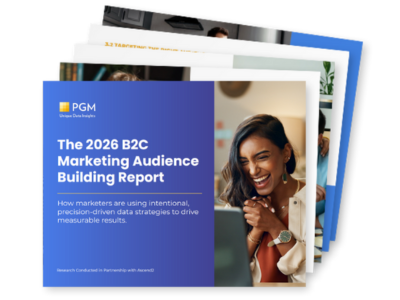For almost 30 years, third-party cookies have been a cornerstone of digital advertising, enabling ad platforms to track user behavior across websites.
However, growing data privacy concerns and stricter regulations have driven a significant shift in the industry.
Are Third-Party Cookies Really Going Away? The Latest Update from Google
The conversation around the deprecation of third-party cookies in Google Chrome has evolved considerably. While there have been multiple delays and shifts in the timeline, the most recent update from Google (April 2025) indicates a significant change in strategy:
Google is no longer proceeding with the immediate, standalone deprecation of third-party cookies or rolling out a new user-facing prompt to fully enable or disable them in Chrome. Instead, Chrome will continue to offer users third-party cookie choice through existing privacy settings. This means, for now, marketers and advertisers can continue to rely on third-party cookie data in Chrome.
This decision comes after extensive engagement with the industry, including publishers, developers, regulators (like the UK’s Competition and Markets Authority – CMA), and the advertising ecosystem, revealing divergent perspectives and complexities in finding suitable alternatives.
Google emphasizes that it will continue to enhance tracking protections in Chrome’s Incognito mode, which already blocks third-party cookies by default, and plans to launch IP Protection in Q3 2025.
Michelle Taves, VP & Group GM of Data and Marketing at PGM states, “While Google’s latest decision to retain third-party cookie choice in Chrome provides a temporary reprieve, it would be a critical mistake to view this as a return to business as usual. The fundamental shift towards a privacy-first internet, driven by consumer demand and regulatory pressure, remains undeniable. Our focus as marketing leaders must continue to be on building robust first-party data strategies and exploring privacy-enhancing technologies. Those who slow their pace now will be playing catch-up in the very near future.”
The Privacy Sandbox Initiative
The Privacy Sandbox initiative continues, but its role in supporting the ad ecosystem is being re-evaluated in light of this revised approach. Google intends to share an updated roadmap for these technologies in the coming months.
So, what does this mean? While a complete and immediate phase-out of third-party cookies in Chrome is not happening as previously anticipated, this is not a signal to disregard the ongoing shift towards privacy-centric advertising. Other browsers like Safari and Firefox already block third-party cookies by default, and regulatory pressure and consumer expectations for data privacy are only increasing. This latest development provides a temporary reprieve but reinforces the need for marketers to proactively invest in resilient, privacy-forward strategies.
Todd Dziedzic, Head of Data Science & Activation at PGM shares, “The recent recalibration of Google’s Privacy Sandbox roadmap, while offering a temporary extension for third-party cookies, underscores the fluidity of this privacy evolution. This is not a ‘back to basics’ moment, but rather a pivot – meaning we must continue our vigilance in strengthening first-party data strategies, experimenting with contextual solutions, and actively engaging with the evolving Privacy Sandbox APIs. The goal remains a more privacy-centric web, and the successful marketers will be those who adapt swiftly, understanding that flexibility and continuous learning are now paramount.”
3 Essential Strategies to Prepare for a Privacy-Centric Future
Even with the latest changes, the long-term trend is clear: the digital advertising landscape is moving away from reliance on third-party cookies. The time to adapt is now.
1. Collect and Leverage First-Party Data
First-party data, collected directly from your customers with their consent, is more valuable and privacy-compliant than ever. Create valuable experiences that encourage users to log in, as authenticated traffic. This will provide you with the insights you need to deliver personalized experiences and empower your data strategies.
Focus on strategies that encourage your customers to willingly share their information:
- Newsletter Sign-ups: Offer exclusive content, early access, or special deals in exchange for email addresses.
- Account Creation/Loyalty Programs: Provide incentives for users to create accounts, which allows for deeper personalization and ongoing engagement.
- Interactive Content: Quizzes, surveys, and product finders can gather valuable preference data while providing value to the user.
- In-store Connections: Integrate online and offline data by connecting loyalty accounts across channels and equipping sales associates with CRM data for personalized service.
Most importantly, be transparent about what data you collect and how it will be used. Ensure relevant messaging and a clear value exchange for users who share their data. Invest in creating valuable experiences that encourage users to log in, as authenticated traffic provides richer first-party insights.
2. Contextual Targeting
Contextual targeting involves displaying ads based on the content of a web page or app, rather than individual user data. This approach is inherently privacy-compliant and effective in reaching interested audiences.
Here are a few key points to consider when using contextual targeting:
- Leverage AI for Sophisticated Matching: Modern contextual targeting goes beyond keywords, using AI to analyze themes, sentiment, and overall relevance of content to place ads.
- Enhance Relevance: Align ads with the content a user is actively engaging with (e.g., an ad for hiking gear on a blog post about hiking trails) to increase the likelihood of resonance and conversion.
- Compliance with Privacy Regulations: Since contextual targeting doesn’t rely on personal data, it fully complies with evolving privacy laws like GDPR and CCPA, which is great news for advertisers across the board!
- Market Growth: Contextual advertising market is experiencing significant growth, with projections indicating a strong future.
3. Explore Privacy-Compliant Solutions
Data privacy continues to be a hot topic. As a result, the industry is actively developing new tools and technologies to navigate the privacy landscape. As an advertiser, staying informed and experimenting with these solutions is crucial.
Privacy Sandbox (Evolving Role)
While the direct deprecation of third-party cookies has changed, Google’s Privacy Sandbox initiatives (like Topics and Protected Audience API) continue to be developed. These aim to provide alternative functionalities for ad targeting and measurement while prioritizing user privacy by allowing browsers to understand general interests without revealing specific Browse history. Keep an eye on Google’s updated roadmap for these APIs.
Consent Management Platforms (CMPs)
CMPs are essential for obtaining and managing user consent for data collection in a transparent and compliant manner. By implementing a CMP, you demonstrate a commitment to user privacy, which can build trust and encourage first-party data sharing. Choose a CMP that helps you comply with applicable data protection regulations and offers features like geolocation and cross-device consent management.
Data Clean Rooms
These secure environments allow multiple parties (brands, publishers, agencies) to collaborate on analyzing anonymized data sets without compromising individual user privacy. Data clean rooms facilitate campaign measurement, audience segmentation, and insights by enabling the combination of first-party data with partner data in a controlled environment. They are becoming a critical tool for scaling first-party data usage and maintaining compliance.
Conclusion
The digital advertising landscape is undeniably in flux, driven by a global push for greater data privacy. While Google’s latest decision regarding third-party cookies in Chrome offers a temporary pause, it’s not a reason for complacency. The fundamental shift towards privacy-first marketing continues. Experiment with these strategies now to ensure your campaigns are resilient.





